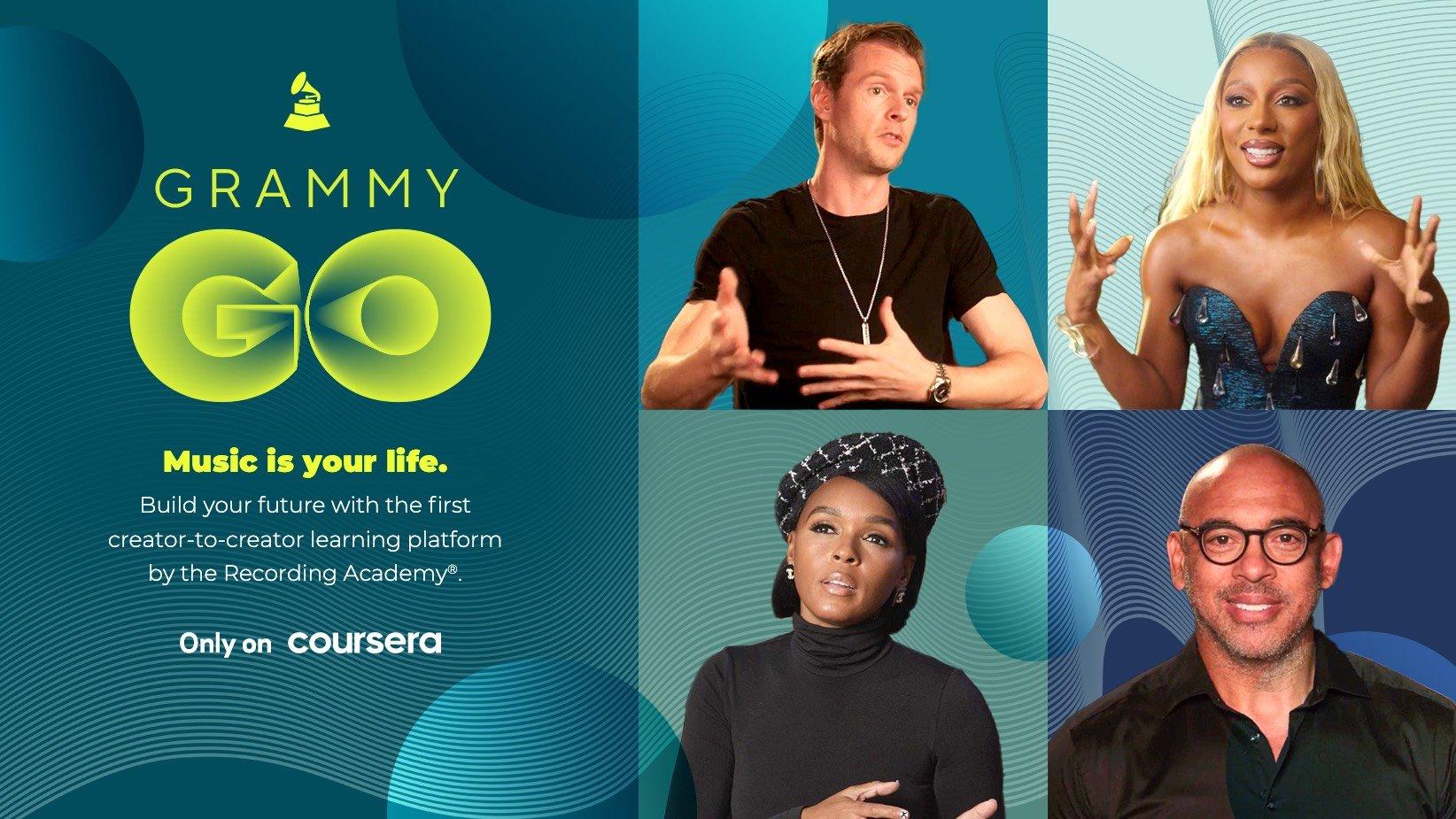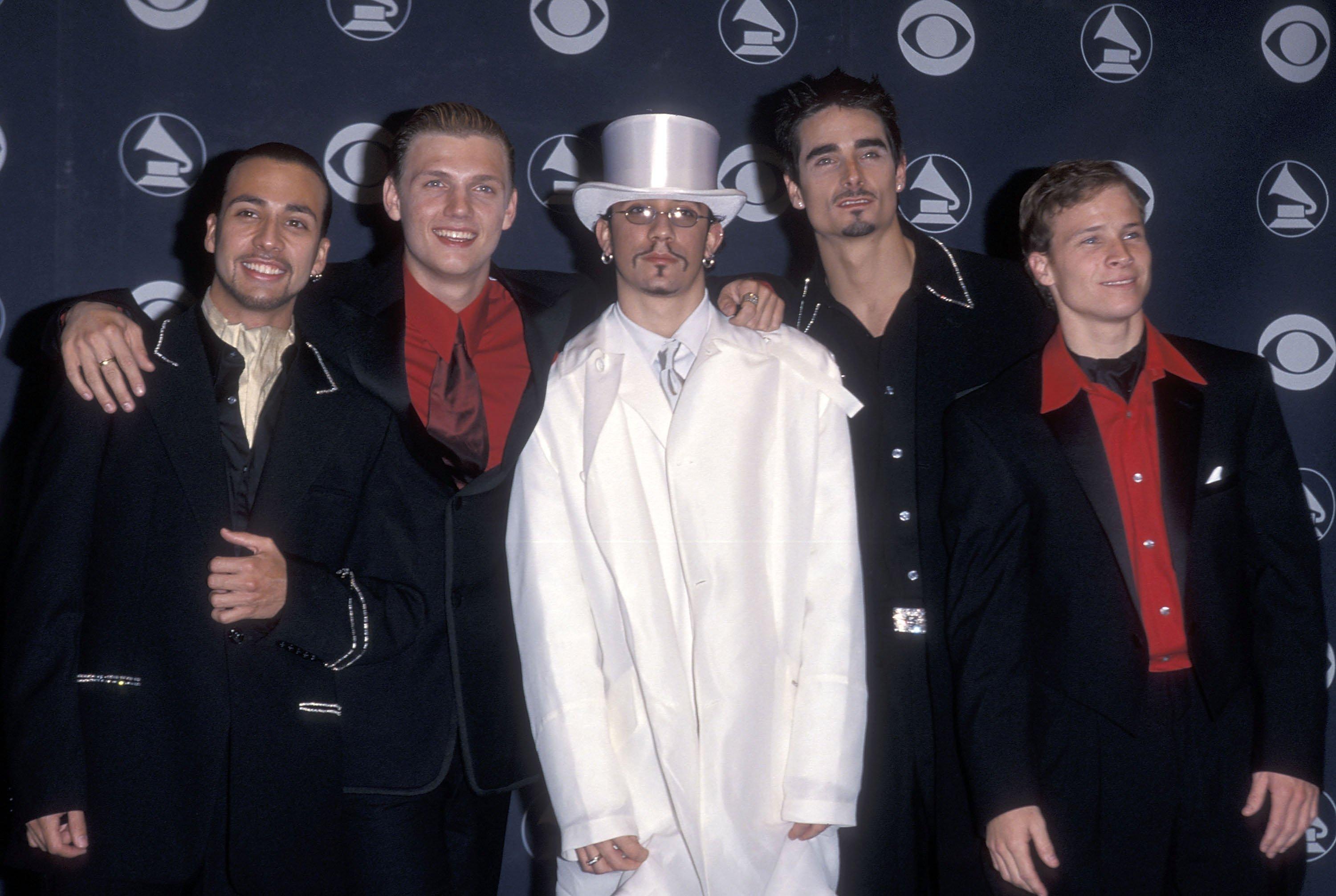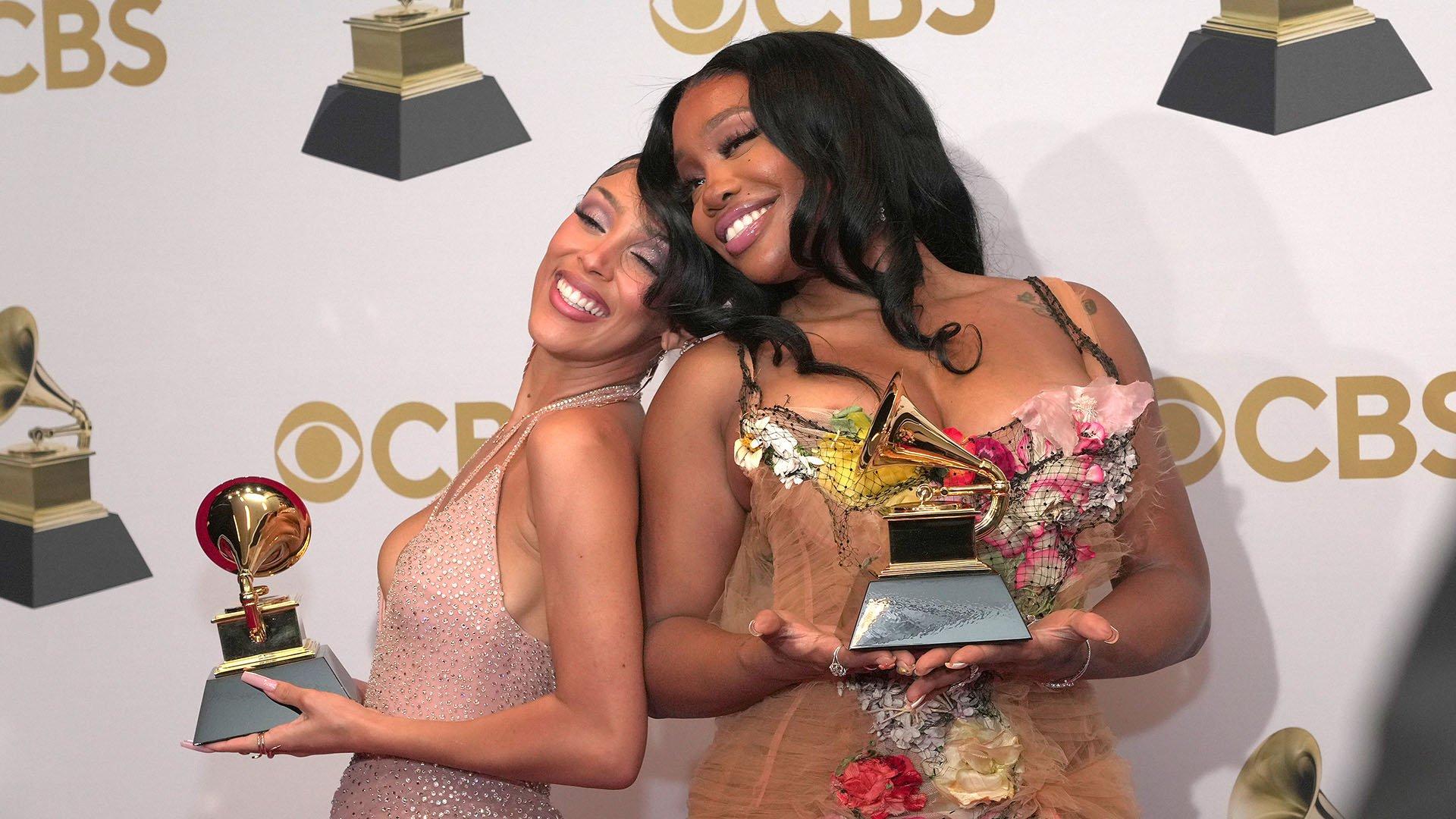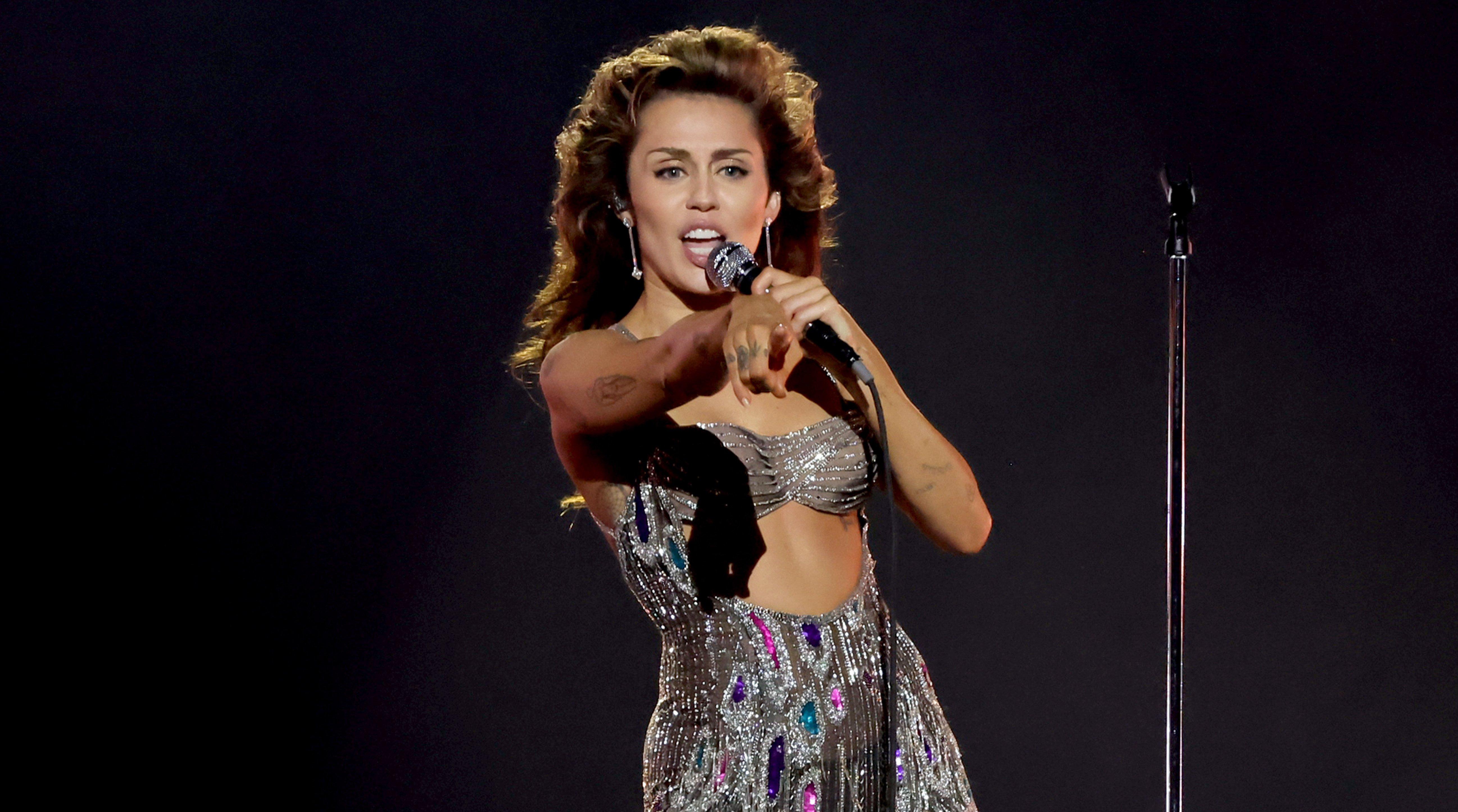Photo: Todd Williamson/Getty Images

Missy Elliott & Pharrell Williams
news
Pharrell Announces Something In The Water Fest Ft. Missy Elliott, Janelle Monae, SZA, Rosalia, Migos & More
The new music festival curated by the GRAMMY-winning producer will get you dancing in his hometown of Virginia Beach from April 26–28
GRAMMY-winning producer/singer/songwriter/rapper and all-around hit-maker Pharrell Williams announced his latest endeavor today: Something In The Water Festival.
The brand-new music festival curated by the musical powerhouse will take over his hometown of Virginia Beach from April 26–28 with a super-stacked lineup including fellow GRAMMY winners Missy Elliott, Diplo, Dave Mathews Band and Anderson .Paak with his band The Free Nationals. GRAMMY nominees SZA, Migos, Janelle Monáe, Travis Scott, J Balvin, Pusha T and Jhené Aiko are also slated to perform.
<blockquote class="twitter-tweet" data-lang="en"><p lang="en" dir="ltr">Excited to announce the first ever SOMETHING IN THE WATER Festival, a 3 day music festival and cultural experience happening April 26-28 in Virginia Beach. Tickets will go on sale beginning Friday, March 8 at 12pm ET at <a href="https://t.co/hitO9dwpDD">https://t.co/hitO9dwpDD</a>. <a href="https://twitter.com/hashtag/SITWfest?src=hash&ref_src=twsrc%5Etfw">#SITWfest</a> <a href="https://t.co/IdQ6ziAwC7">pic.twitter.com/IdQ6ziAwC7</a></p>— Something In The Water (@sitw) <a href="https://twitter.com/sitw/status/1102590746375286784?ref_src=twsrc%5Etfw">March 4, 2019</a></blockquote>
<script async src="https://platform.twitter.com/widgets.js" charset="utf-8"></script>
The three-day beachfront event will feature only one stage, meaning you can actually catch all of the performances. Rising acts include Canadian funky hip-hop producer Kaytranada, Spanish flamenco/pop innovator Rosalía and American singer/songwriter Maggie Rogers, who went viral after Pharrell gave a rave review of her "Alaska" demo during a class at NYU in 2016.
Related: Primavera Sound 2019 Features A "New Normal" Equal-Gender Lineup
The organizer himself will also perform; he's listed on the lineup as "Pharrell & Friends," for what is likely to be a collab-filled set.
Speaking of friends, fellow Virginians repping at the fest will be GRAMMY-nominated rapper DRAM, Dave Matthews Band, who formed in Charlottesville, Va., Elliott, who has collabed with Pharrell on multiple occasions, including their hit "WTF," and Pusha T. Pusha also grew up in Virginia Beach, where he and his brother formed the hip-hop duo Clipse and met and worked with Pharrell, then part of production duo The Neptunes.
At the 61st GRAMMY Awards last month, Pharrell earned his 12th GRAMMY win for Producer Of The Year, Non-Classical. He also won in the same category at the 56th GRAMMY Awards, the same year he earned a win for his work on Daft Punk's Random Access Memories, which took home Album Of The Year.
Tickets for Something In The Water go on sale Fri. March 8; the full lineup and more info can be found on their website.
2019 Music Festival Preview: Noise Pop, Coachella, Ultra & More

Graphic & Photos Courtesy of GRAMMY GO
news
Recording Academy & Coursera Partner To Launch GRAMMY GO Online Learning Initiative
Class is in session. As part of the Recording Academy's ongoing mission to empower music's next generation, GRAMMY Go offers digital content in specializations geared to help music industry professionals grow at every stage of their career.
The Recording Academy has partnered with leading online learning platform Coursera on GRAMMY GO, a new online initiative to offer classes tailored for music creators and industry professionals.
This partnership empowers the next generation of the music community with practical, up-to-the moment digital content that provides wisdom for both emerging and established members of the industry. Continuing the Academy’s ongoing mission to serve all music people, courses cover a variety of specializations tailored to creative and professional growth.
GRAMMY GO on Coursera includes courses taught by Recording Academy members, featuring GRAMMY winners and nominees and offers real-life lessons learners can put to work right away.
Starting today, enrollment is open for GRAMMY GO’s first Coursera specialization, "Building Your Audience for Music Professionals," taught by Joey Harris, international music/marketing executive and CEO of Joey Harris Inc. The course features Rock & Roll Hall of Fame inductee and five-time GRAMMY winner Jimmy Jam, 10-time GRAMMY nominee Janelle Monáe and three-time GRAMMY winner and the 2024 GRAMMYs Best New Artist Victoria Monét. This foundational specialization will help participants gain the skills, knowledge and confidence to build a strong brand presence and cultivate a devoted audience within the ever-changing music industry.
The partnership’s second course, launching later this summer, aims to strengthen the technological and audio skills of a music producer. "Music Production: Crafting An Award-Worthy Song" will be taught by Carolyn Malachi, Howard University professor and GRAMMY nominee, and will include appearances by GRAMMY winner CIRKUT, three-time GRAMMY winner Hit-Boy, artist and celebrity vocal coach Stevie Mackey, five-time GRAMMY nominee and Recording Academy CEO Harvey Mason jr., and 15-time GRAMMY winner Judith Sherman. Pre-enrollment for "Music Production: Crafting An Award-Worthy Song" opens today.
"Whether it be through a GRAMMY Museum program, GRAMMY Camp or GRAMMY U, the GRAMMY organization is committed to helping music creators flourish, and the Recording Academy is proud to introduce our newest learning platform, GRAMMY GO, in partnership with Coursera," said Panos A. Panay, President of the Recording Academy. "A creator’s growth path is ongoing and these courses have been crafted to provide learners with the essential tools to grow in their professional and creative journeys."
"We are honored to welcome GRAMMY GO, our first entertainment partner, to the Coursera community," said Marni Baker Stein, Chief Content Officer at Coursera. "With these self-paced online specializations, aspiring music professionals all over the world have an incredible opportunity to learn directly from iconic artists and industry experts. Together with GRAMMY GO, we can empower tomorrow's pioneers of the music industry to explore their passion today."
GRAMMY GO also serves as the music community’s newest digital hub for career pathways and editorial content that provides industry insights for members of the industry; visit go.grammy.com for more. For information and enrollment, please visit the landing pages for "Building Your Audience for Music Professionals" and "Music Production: Crafting An Award-Worthy Song."

Photo: Ron Galella, Ltd./Ron Galella Collection via Getty Images
list
25 Years Of Backstreet Boys' "I Want It That Way": 10 Covers By Ed Sheeran, Lil Uzi Vert & More
To commemorate the anniversary of Backstreet Boys' biggest hit, take a look at 10 clever ways it's been covered and sampled — from Ed Sheeran's karaoke bit to a Weird Al special.
When the Backstreet Boys released "I Want It That Way" on April 12, 1999, they likely had no idea how beloved their smash hit would still be a quarter-century later.
Written by the Swedish powerhouse team of Andreas Carlsson and Max Martin, "I Want It That Way" is undoubtedly BSB's signature hit, particularly thanks to its memorable undulating melody and its long-debated cryptic meaning. But perhaps the most surprising part of the song's legacy is how it has resonated across genres — from a TikTok cover by Korn to a hip-hop sampling by Lil Uzi Vert.
As the Backstreet Boys celebrate the 25th anniversary of "I Want It That Way," take a look at how the song has been diversely covered, lovingly lampooned and karaoke jammed by an array of voices in the business.
Weird Al Yankovic (2003)
When the king of parody songs selects one to skewer, you know it's an iconic song. Weird Al Yankovic paid tribute to the largeness of the Backstreet Boys classic when he used "I Want It That Way" as the basis of a song called "eBay" in 2003.
Yankovic's chorus replaces the original's with, "A used pink bathrobe/ A rare mint snow globe/ A Smurf TV tray/ I bought on eBay." The Backstreet Boys send up appears on Yankovic's album Poodle Hat, which won Best Comedy Album at the 2004 GRAMMYs.
One Direction (2013)
Three years One Direction formed on "The X Factor," the five lads — Harry Styles, Zayn Malik, Niall Horan, Liam Payne and Louis Tomlinson — included a cover of "I Want It That Way" on their 2013 concert set lists, the young boy band paying homage to the ones that came before them. Though their English accents poked through at times, their version was loyal to the original, and got their crowds singing along.
"Glee" (2013)
Poking fun at the presumed rivalry between *NSYNC and Backstreet Boys, a medley of the former's "Bye Bye Bye" and "I Want It That Way" was featured in Season 4, Episode 16 of "Glee." In the episode — aptly titled "Feud" — choir director Mr. Schuester (Matthew Morrison) and glee club heartthrob Finn (Cory Monteith) face off in an epic boy band battle, which ultimately proved the groups' respective music was more cohesive than divisive.
Brittany Howard and Jim James (2016)
The lead singers of Alabama Shakes and My Morning Jacket covering a boy band classic. It doesn't sound real, but Brittany Howard and Jim James did just that in 2016 when they recorded "I Want It That Way" for an animated short cartoon called "A Love Story."
Released by the fast food chain Chipotle Mexican Grill, the clip was part of a creative campaign to showcase the company's focus on natural ingredients. Howard and James highlight the poignancy and versatility of the song by adding lush string arrangements and dramatic beats.
Backstreet Boys x Jimmy Fallon and The Roots (2018)
The 2018 live performance of "I Want It That Way" by the Backstreet Boys, Jimmy Fallon and The Roots for "The Tonight Show" is arguably the sweetest rendition of the song — and not just because they're using a mini xylophone, baby tambourine and other toy classroom instruments. It's even more endearing than the previous collaborations between Fallon and Backstreet Boys: a barbershop singing version of Sisqo's "Thong Song" and a "Bawkstreet Boys" version of "Everybody (Backstreet's Back)," with everyone dressed like fluffy birds.
The 1975 (2020)
British rockers The 1975 performed a fairly faithful cover of "I Want It That Way," hitting all the high notes at several of their 2023 world concert tour stops. But it's not the first time frontman Matty Healy has hinted at the Backstreet Boys' influence on his band: he told Pitchfork in 2020 that "College Dropout-era Kanye West meets Backstreet Boys" was part of their veritable moodboard at the time when working on their own song called "Tonight (I Wish I Was Your Boy)."
Lil Uzi Vert (2020)
In 2020, Lil Uzi Vert released a rap song called "That Way" that includes a refrain of "I want it that way" sung to the tune of the Backstreet original, but with an AutoTune twist. From there, the lyrics become quite a bit naughtier than anything the BSB guys have uttered in any song.
"I don't know how [the idea of] Backstreet Boys got involved in this song, I really don't," the song's producer Supah Mario told Splice at the time. "I think it was all Uzi. But it was a game changer."
The interpolation was so good, in fact, that Nick Carter even invited Lil Uzi Vert to collaborate: "Now you're gonna have to be featured on our next album bud," he tweeted upon the song's release.
Korn (2022)
Fans of Korn know that the nu metal band has a sense of humor, but few could've expected that Jonathan Davis and crew would post a TikTok of themselves singing "I Want It That Way" in 2022.
"I never wanna hear you say… 'Worst Is On Its Way,'" reads the caption on the post, a tongue-in-cheek reference to Korn's 2022 song of the same name.
Backstreet Boys responded on the app via a hilarious Duet video with Nick Carter. In the video, Carter — who sports fabulous metal eye makeup and a long silver wig — doesn't actually say or sing anything, he just drops his jaw in amazement.
Backstreet Boys x Downy (2022)
Downy hired the Backstreet Boys to poke fun at "I Want It That Way" with the now-viral "Tell Me Why" commercial in 2022. All five members — Nick Carter, Howie Dorough, Brian Littrell, AJ McLean and Kevin Richardson — appear as a Backstreet Boys poster on the wall that comes to life, using the "tell me why" hook of their hit to engage a woman doing laundry in a conversation about washing her clothes.
As Saatchi group account director Jen Brotman told Muse at the time, the nostalgic ad also spawned some memories for the folks working on the ad campaign.
"The moment [BSB] stood in front of the camera, they rehearsed 'I Want It That Way' just to get the notes right, and we felt like we were getting serenaded on set," Brotman recalled. "We couldn't believe how emotional we all got — there may or may not have been tears in some eyes. The song has always been a karaoke favorite of the team, so we knew which 'tell me whys' we wanted them to hit, and we still can't get it out of our heads."
Ed Sheeran (2023)
When he fancies singing a bit of karaoke, Ed Sheeran loves leaning on "I Want It That Way," as the star showed at his favorite Nashville bar in July 2023. A patron caught him on camera and his happiness level is undeniable when belting out this enduring pop classic.
As Sheeran told CBS News a few months later, he grew up on the pop hits of everyone from Backstreet Boys to Britney Spears. But what he said about "I Want It That Way" specifically may be the best way to describe its long-lasting impact: "You can't be in a bar, a couple of beers in, and 'I Want It That Way' comes on and not be like, 'This is a good song.' You can't."
24 Songs Turning 20: Listen To 2004's Bangers, From "Yeah!" To "Since U Been Gone"

Photo: Kevin Mazur/Getty Images for The Recording Academy
video
GRAMMY Rewind: Watch Doja Cat & SZA Tearfully Accept Their First GRAMMYs For "Kiss Me More"
Relive the moment the pair's hit "Kiss Me More" took home Best Pop Duo/Group Performance, which marked the first GRAMMY win of their careers.
As Doja Cat put it herself, the 2022 GRAMMYs were a "big deal" for her and SZA.
Doja Cat walked in with eight nominations, while SZA entered the ceremony with five. Three of those respective nods were for their 2021 smash "Kiss Me More," which ultimately helped the superstars win their first GRAMMYs.
In this episode of GRAMMY Rewind, revisit the night SZA and Doja Cat accepted the golden gramophone for Best Pop Duo/Group Performance — a milestone moment that Doja Cat almost missed.
"Listen. I have never taken such a fast piss in my whole life," Doja Cat quipped after beelining to the stage. "Thank you to everybody — my family, my team. I wouldn't be here without you, and I wouldn't be here without my fans."
Before passing the mic to SZA, Doja also gave a message of appreciation to the "Kill Bill" singer: "You are everything to me. You are incredible. You are the epitome of talent. You're a lyricist. You're everything."
SZA began listing her praises for her mother, God, her supporters, and, of course, Doja Cat. "I love you! Thank you, Doja. I'm glad you made it back in time!" she teased.
"I like to downplay a lot of s— but this is a big deal," Doja tearfully concluded. "Thank you, everybody."
Press play on the video above to hear Doja Cat and SZA's complete acceptance speech for Best Pop Duo/Group Performance at the 2022 GRAMMY Awards, and check back to GRAMMY.com for more new episodes of GRAMMY Rewind.
How 'SOS' Transformed SZA Into A Superstar & Solidified Her As The Vulnerability Queen

Photo: Kevin Winter/Getty Images for The Recording Academy
news
Listen: Miley Cyrus & Pharrell Reunite For New Song "Doctor (Work It Out)"
Ten years after their first funky single, Miley Cyrus and Pharrell Williams strike again with "Doctor (Work It Out)," which arrived on March 1. Hear the new track and watch the spirited music video here.
On the heels of her first GRAMMY wins, Miley Cyrus is feeling good — and she's ready to be your cure.
The pop superstar unveiled her new single, a lustful, funky dance track titled "Doctor (Work It Out)," on March 1. The track is her latest collaboration with Pharrell, and their first in 10 years.
Over a pulsating bass guitar-driven beat, Cyrus opens with the punchy chorus (“I could be your doctor/ And I could be your nurse/ I think I see the problem/ It's only gon' get worse/ A midnight medication/ Just show me where it hurts," she sings) before erupting into a dance break as she declares, "Let me work it out… Imma work it out…”
So far, 2024 is feelin' fine for Cyrus. At the 2024 GRAMMYs, her 2023 smash, "Flowers," took home two awards, for Best Pop Solo Performance and Record Of The Year. Following her first win, she delivered a knockout performance featuring the unforgettable ad lib, "I started to cry and then I remembered I… just won my first GRAMMY!"
Less than a month later, "Doctor (Work It Out)" serves as another groovy celebration of Cyrus' achievements in life and music so far.
The song's music video is reminiscent of her 2024 GRAMMYs performance, too. Not only is she wearing a similar shimmery fringe dress, but the entire video is a jubilant, blissful solo dance party.
Though Cyrus first teased "Doctor (Work It Out)" just a few days before the song's arrival, Pharrell first gave a sneak peek in January, at his American Western themed Fall/Winter 2024 Louis Vuitton Men's fashion show in Paris. It was Pharrell's third collection for the luxury house, and the bouncy single served as a fitting soundtrack.
The song marks Cyrus' first release in 2024, and her first collab with Pharrell since 2014's "Come Get It Bae" from his album G I R L'; Pharrell also co-wrote and produced four tracks on the deluxe version of Cyrus' 2013 album, Bangerz.
Watch the "Doctor (Work It Out)" video above, and stay tuned to GRAMMY.com for more Miley Cyrus news.
Miley Cyrus' Big GRAMMYs Night: Why Her Two Wins Were Monumental
